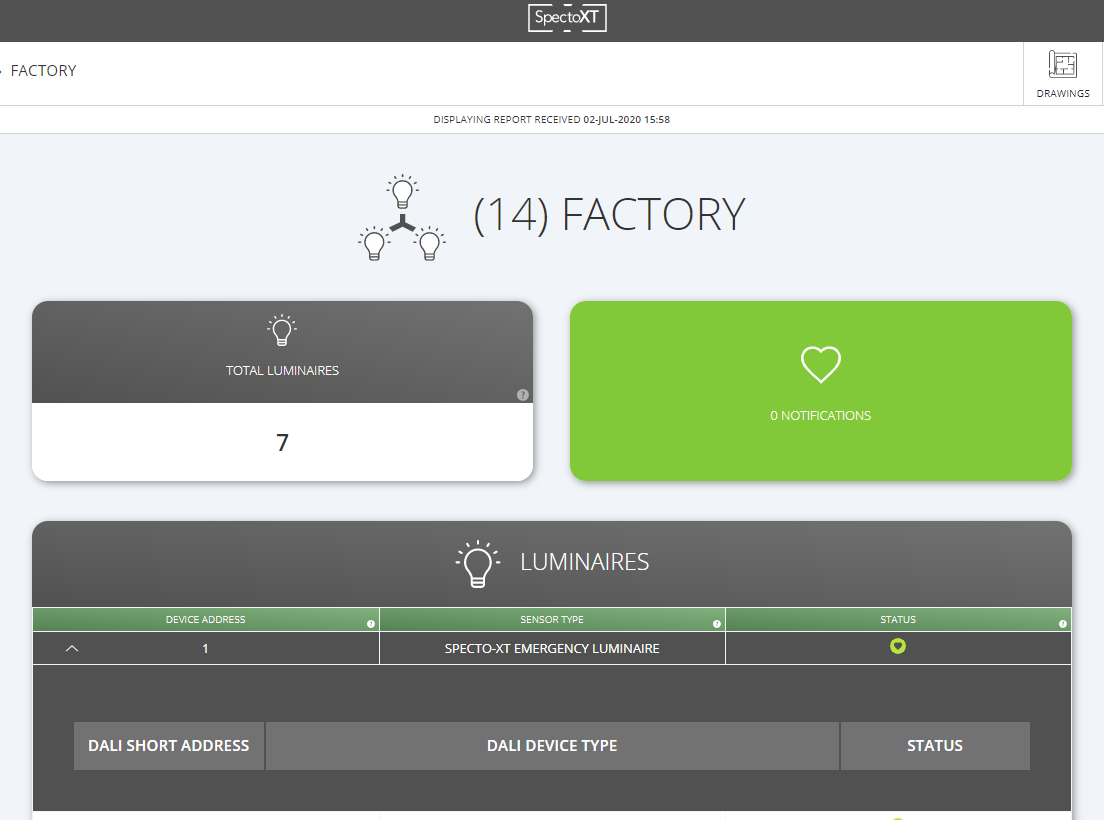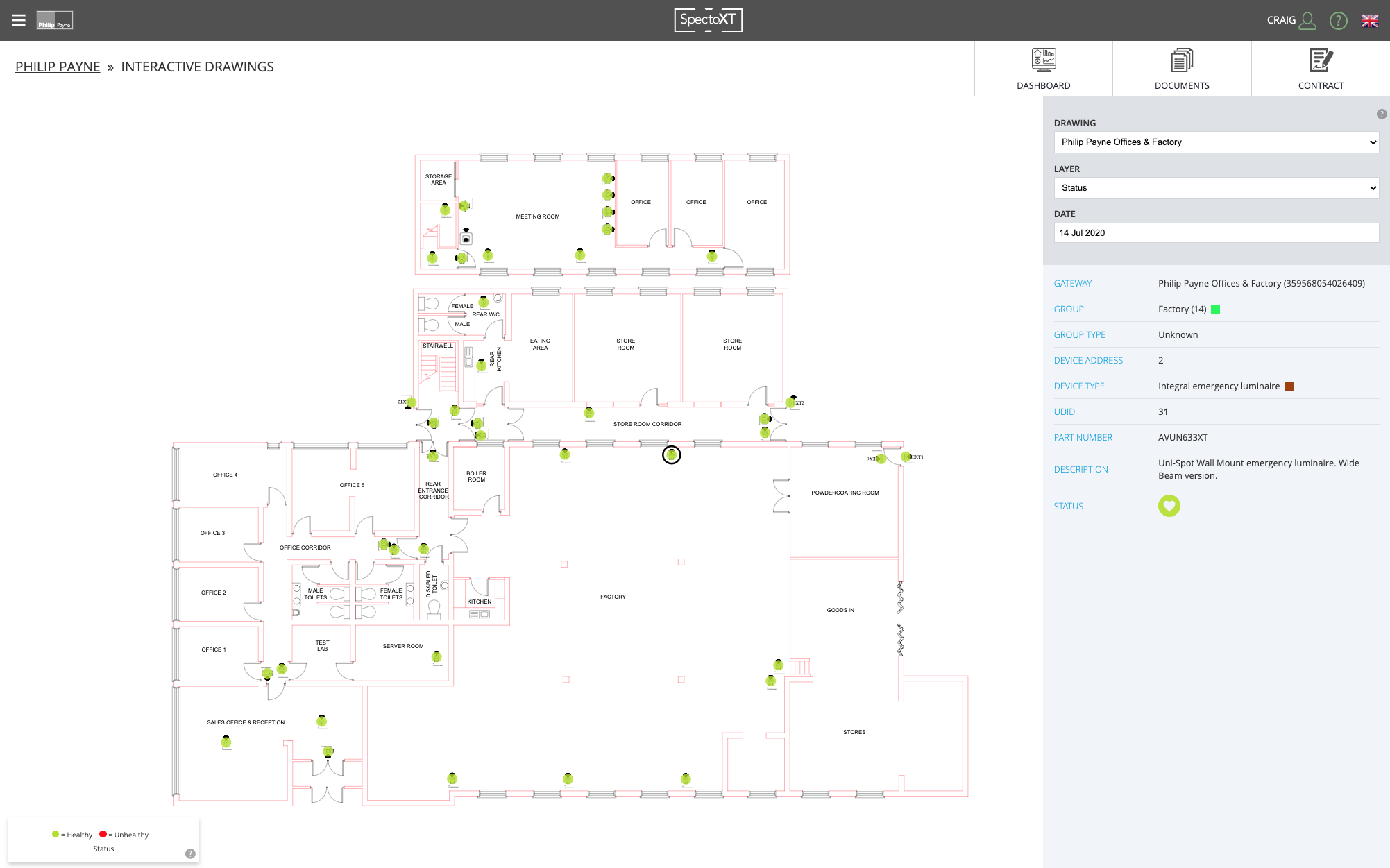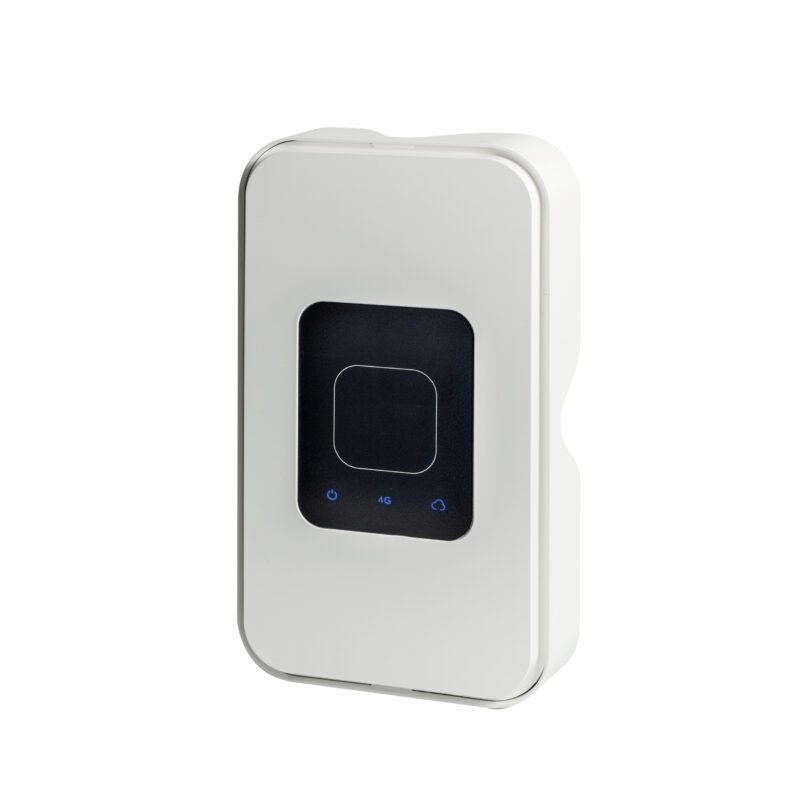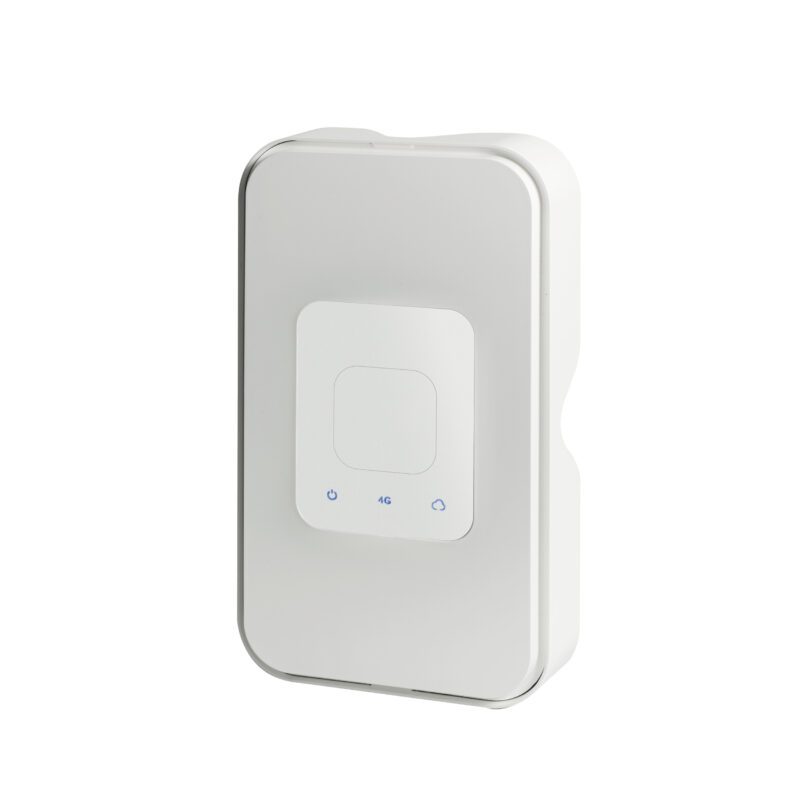 Contact
Find an installer
Contact
Find an installer

Specto-XT
The Specto-XT emergency system uses luminaires containing wireless transceivers.
In real-time Specto-XT luminaires communicate the health status and routine test results to the Specto-XT Gateway and are uploaded onto the website.
This avoids the need for supplementary data cabling which is required for most emergency lighting monitoring systems. Specto-XT luminaires are wired the same as on any conventional emergency lighting installation.
Using a mesh networking principle luminaires can be commissioned using a handheld IR programming device set. Future extra requirements or changes in emergency strategy can be added to the network quickly and simply.
The network operates at a frequency of 868MHz segregating it from other wireless activity and with <1% data exchange rates the system is inert for the majority of the time.
Test regimes and other user-defined parameters can be programmed via the website and downloaded to the Gateway.
The web portal retains historic records (determined by local standards) which are displayed in graphical form. These records, together with site documentation, are easily accessible by client authorised users.
Up to 250 luminaires can communicate with each Gateway.
The full range of Philip Payne Products is available with Specto-XT functionality.
Specto-XT
Philip Payne has a long and proud history of simplifying compliance to emergency standards for its clients and our systems have evolved with advances in technology.
SPECTO was conceived when it first became possible for emergency luminaire to routinely self test in line with EN62034.
SPECTOLINK made it possible to join self testing emergency products together over different floors and report faults to a single “control” location such as a facility management office with no manual intervention.
SPECTOWEB permitted groups of up 64 luminaires using the DALi protocol to communicate to a central controller which could then upload results to a web server.
SPECTO-XT via a wireless mesh and a simple gateway requires no wiring and no central control device and is not governed or constrained by DALi grouping restrictions.
SPECTO-XT is enhanced with a new, faster, wireless network and full IoT permanent connectivity. Users can now interact with devices from anywhere, allowing remote diagnostics and testing as well as remote support, working ‘live’ with engineers in the field.
Specto-XT

Utilises a wireless mesh radio network, the data signals always find a suitable communication path.
An operation fequency of 868MHz provides excellent transmission distances and better penetration of signals.

Transmits less than 1% of the total time (99% of the time wireless is off).

Software uses simple wait before transmit logic to ensure error free transmissions.

Luminaires simply require a mains connection. So there is no need for data cables, additional power supplies or control modules.

Using a single robust hand held infra-red programmer all luminaire types can be very quickly and easily commissioned.
From our factory based in Solihull, UK.

Specto-XT Gateway and Gateway Lite sends out instructions such as emergency lighting automatic testing times. This transmits it to the World Wide Web for simple viewing on any device.
Specto-XT
| Specto-XT standards compliance - UK & Europe | Design Considerations | |
| EN 55015: 2013 +A1:2015 |
Limits & methods of measurement of radio disturbances characteristics of electrical lighting & similar equipment |
Wireless transmission distance will vary depending upon the type of luminaire and its location. Maximum achievable for an open area external site is approximately 70 metres from one Specto-XT transceiver directly to another, reducing significantly indoors particularly where transmissions may be affected by thick concrete walls or metallic structures. Wireless mesh technology significantly improves transmission distances by propagating signals through many Specto-XT devices rather than simply point to point. |
| EN 61547:2009 | Immunity | Data Sheet |
| EN61000-4-3: 2006+A1+A2 |
Electromagnetic Compatibility (EMC) part 4-3. Testing and measurement techniques – Radiated, radio frequency, electromagnetic field immunity test | |
| EN 300 220-2 v3.1.1 | Short Range Devices (SRD) operating in the frequency range 25 MHz to 1000 MHz; Part 2: Harmonised Standard covering the essential requirements of article 3.2 of Directive 2014/53/EU for non specific radio equipment | |
| EN 301 489-1 v1.9.2 | Electromagnetic Compatibility (EMC) standard for radio equipment and services; Part 1: Common technical requirements | |
| EN 301 489-3 v1.6.1 | Assessment of electronic and electrical equipment related to human exposure restrictions for electromagnetic fields (0 Hz - 300 GHz) | |
| EN 60950-1: 2006 2nd Edition + A11 2009 + A1:2010 + A12:2011 + A2:2013 | Information technology equipment. | |
System


An operational frequency of 868MHz provides excellent transmission distances and better penetration of signals.

The Specto-XT Website uses the very latest encryption protocol (TLS 1.3) for secure and reliable transfer of data between computer devices. The website has passed a full penetration test and an attestation letter is available upon request. Full penetration tests are repeated annually.

The IoT Gateway connects to Amazon Web Services using X.509 certificates over a secure TLS (Transport Layer Security) connection via mobile GSM networks or an optional LAN connection.

All data is hosted on servers located within the UK with Bytemark, an Iomart company, certified to ISO27001, ISO9001, ISO22301, ISO20000, ISO14001 and ISO 50001.
Specto-XT

Specto-XT

Compatible Specto-XT Emergency luminaires wirelessly communicate with each other and the Gateway through the mesh network.
The Gateway transmits emergency luminaire status to the Specto-XT web server
Users employ their chosen device to access status reports.
Specto-XT

Identifies devices that are within the same system and forms the boundary for the wireless mesh network to prevent adjacent buildings communicating.

All luminaires with the same building address and the same group address will work together. Up to 250 different zones can be created in one building.

To provide unique identification, individual luminaires within each group can be given an address.
Specto-XT
Specto-XT
The Specto-XT Gateway provides daily uploads of the system status to the website.
Secure access allows the user to view full luminaire status of the whole installation, individual groups of luminaires or individual control gear items within a luminaire.
The website provides an easy to read visual reference highlighting the below.

Specto-XT
Philip Payne Interactive Drawings provide a simple and effective method of viewing system information.

Each dataset is shown as a layer allowing the user to zoom in or out as needed. The user can look at data for the whole building, or focus attention on a single room or individual luminaire.
If a single luminaire is selected, an information table is displayed with the data for that luminaire.The user can select a date and see how the status for each luminaire.
If a luminaire requires attention the exact position is highlighted on the Interactive Drawing. The Information table will show the status of electronic components within the luminaire.
Specto-XT
Specto-XT

MASTER CONTROL AND WEB INTERFACE WITH SPECTO-XT WIRELESS COMMUNICATION The Specto-XT Gateway provides daily uploads of the system status to...
Find Out More
MASTER CONTROL AND WEB INTERFACE WITH SPECTO-XT WIRELESS COMMUNICATION The Specto-XT Gateway provides daily uploads of the system status to...
Find Out MoreBuilding owners, employers or “responsible persons” are legally bound to record the regular testing, inspection and maintenance of their emergency lighting system.
Legislation, Standards and Guidance Documents include:
BS EN 50172:2004 specifies the following routine test schedule for self-contained emergency luminaires:
Full 3 hour test
Each self-contained emergency luminaire must be energized from its battery for a short duration to simulate mains failure. The lamp should illuminate from the battery.
Each self-contained emergency luminaire must be energized from its battery for the full duration (normally three hours).
BS EN 62034:2012 is the European Standard for Automatic Test Systems for Battery Powered Emergency Escape Lighting. One of the main requirements is that the device must be self-monitoring and that it checks all tests are being performed at specified intervals.
Find out more about Specto-XT
Design and development by Method Design
Copyright © 2025 Philip Payne Ltd. All rights reserved.